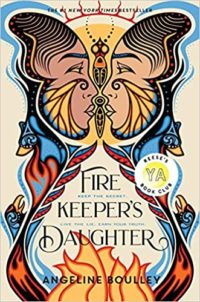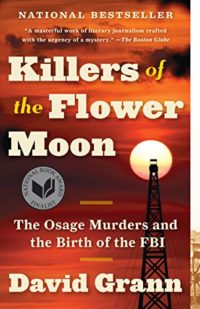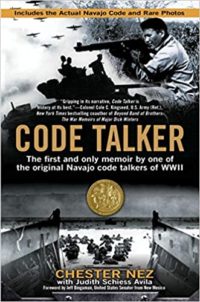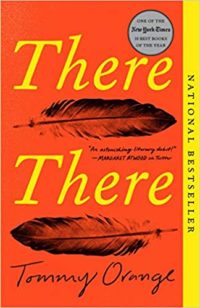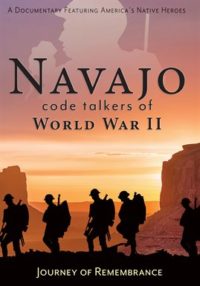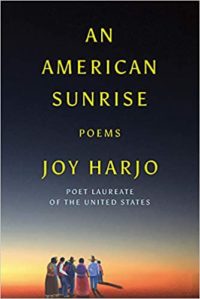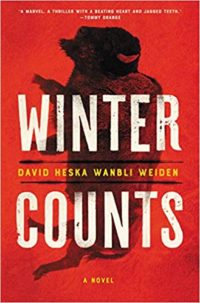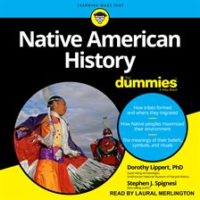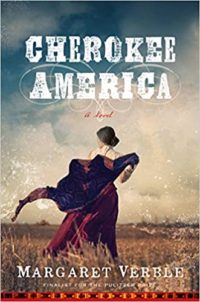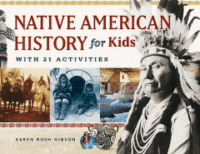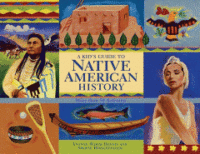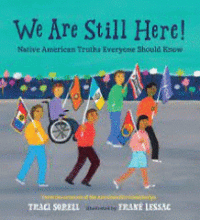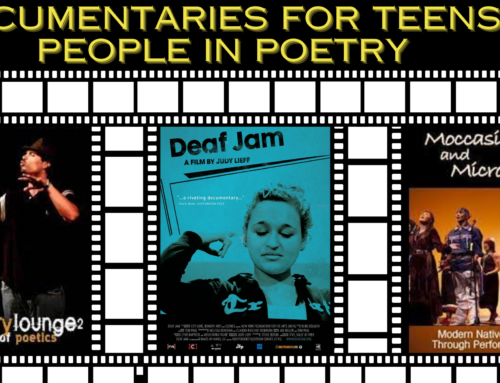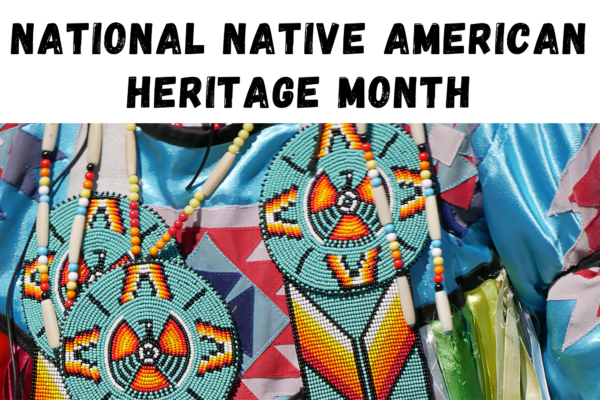
Did you know that Maryland archaeologists can date Native American culture back to over 11,000 years ago?
This would have been when the first Paleo-Indians arrived from other parts of North America. They most likely arrived because they were exploring the area for hunting purposes.
Approximately 3,000 years ago, Maryland was home to over 8,000 Native Americans consisting of over 40 different tribes. These first Marylanders farmed, fished, hunted and traded with other tribes as far away as 300 miles. Fast forward to 17th century Maryland and you would have encountered tribes such as: Accohannock, Assateaque,Choptank,Delaware, Matapeake, Nanticoke,Piscataway,Pocomoke, and Shawnee.
Descendants of these Native American tribes still live in Maryland today. And other tribes not native to Maryland, such as the Lumbee who came to the Baltimore area after World War II. In a recent census, “more than 40,000 individuals in Maryland identified themselves as being Native American or part Native American” (American Indian Tribes Today – Captain John Smith Chesapeake National Historic Trail (US National Park Service). The State of Maryland formally recognizes the following three tribes: the Piscataway Indian Nation, Piscataway Conoy Tribe, and the Accohannock Indian Tribe.
What are the origins of National Native American Heritage month?
In 1912, Dr. Arthur Caswell Parker from the Seneca Nation convinced the Boy Scouts of America to celebrate a First Americans’ Day. This is one of the first recorded attempts to honor and give recognition to the Native Americans in the twentieth century. In the following years, both Native American and non-Native Americans urged local, state and federal governments to designate a special day or week on the calendar to celebrate Native Americans. It wasn’t until 1976 that Native Americans were recognized nationally by a United States President. President Gerald Ford proclaimed October 10th-16th as Native American Awareness Week.
Fast forward to the year 1987, and American Indian Week was appointed by President Ronald Reagan and Congress. Finally, in 1990 President George H.W. Bush approved a joint resolution designating the month of November as National American Indian Heritage Month. This tribute would be used “to honor the contributions, achievements, sacrifices, and cultural and historical legacy of the original inhabitants of what is now the United States and their descendants: the American Indian and Alaska Native people.” In 2009, President Barack Obama proclaimed November as National Native American Heritage Month.
Below is a small excerpt from President Obama’s Presidential Proclamation in 2010:
“For millennia before Europeans settled in North America, the indigenous peoples of this continent flourished with vibrant cultures and were the original stewards of the land. From generation to generation, they handed down invaluable cultural knowledge and rich traditions, which continue to thrive in Native American communities across our country today. During National Native American Heritage Month, we honor and celebrate their importance to our great Nation and our world.”
Join us now in celebrating National Native American Heritage Month and engage, discover and learn more about Native American history, culture, and viewpoints from the library materials below!
Book Recommendations
The Heartbeat of Wounded Knee by David Treuer
Treuer melds history with reportage and memoir. Tracing the tribes’ distinctive cultures from first contact, he explores how the depredations of each era spawned new modes of survival. (adapted from jacket)
Fire Keeper’s Daughter by Angeline Boulley
Daunis Fontaine has never quite fit in, either in her hometown or on the nearby Ojibwe reservation. She dreams of college, but when her family is struck by tragedy she puts her future on hold to care for her fragile mother. The only bright spot is meeting Jamie, a new recruit on her brother Levi’s hockey team. When Daunis witnesses a shocking murder, she reluctantly agrees to go undercover, drawing on her knowledge of chemistry and Ojibwe traditional medicine to track down the source of a new drug. How far will she go to protect her community, if it threatens to tear apart the only world she’s ever known? (adapted from jacket)
Killers Of The Flower Moon: The Osage Murders And The Birth Of The FBI By David Grann
Presents a true account of the early twentieth-century murders of dozens of wealthy Osage and law-enforcement officials, citing the contributions and missteps of a fledgling FBI that eventually uncovered one of the most chilling conspiracies in American history. (adapted from jacket)
Code Talker by Chester Nez
“Chester Nez, one of the twenty-nine original code talkers, offers his memoir of his American life before, during and after World War II. It is a treasure, and so is he.” – Jeff Bingaman (former U.S. Senator)
There There by Tommy Orange
“Not since Sherman Alexie’s The Lone Ranger and Tonto Fistfight in Heaven and Louise Erdrich’s Love Medicine has such a powerful and urgent Native American voice exploded onto the landscape of contemporary fiction. Tommy Orange’s There There introduces a brilliant new author at the start of a major career. “We all came to the powwow for different reasons. The messy, dangling threads of our lives got pulled into a braid–tied to the back of everything we’d been doing all along to get us here. There will be death and playing dead, there will be screams and unbearable silences, forever-silences, and a kind of time-travel, at the moment the gunshots start, when we look around and see ourselves as we are, in our regalia, and something in our blood will recoil then boil hot enough to burn through time and place and memory. We’ll go back to where we came from, when we were people running from bullets at the end of that old world. The tragedy of it all will be unspeakable, that we’ve been fighting for decades to be recognized as a present-tense people, modern and relevant, only to die in the grass wearing feathers.”
Navajo Code Talkers of World War II
During World War II, a group of Native American Marines devised an unbreakable code that helped the United States maintain the upper hand in many battles and, eventually, led to the surrender of Japan in 1945. This documentary provides insights into the lives of these war heroes in regards to their service on behalf of the United States and the Navajo Nation. Filmed on location in key places such as Iwo Jima, Okinawa, Guam, and Saipan, these six World War II veterans will complete a true journey of remembrance as they recite wartime stories and deliver history in its purest form. (from back cover)
Braiding Sweetgrass by Robin Wall Kimmerer
As a leading researcher in the field of biology, Robin Wall Kimmerer understands the delicate state of our world. But as an active member of the Potawatomi nation, she senses and relates to the world through a way of knowing far older than any science. In Braiding Sweetgrass, she intertwines these two modes of awareness–the analytic and the emotional, the scientific and the cultural–to ultimately reveal a path toward healing the rift that grows between people and nature. The woven essays that construct this book bring people back into conversation with all that is green and growing; a universe that never stopped speaking to us, even when we forgot how to listen. (provided by publisher)
An American Sunrise by Joy Harjo
A stunning new volume from the first Native American Poet Laureate of the United States, informed by her tribal history and connection to the land. In the early 1800s, the Mvskoke people were forcibly removed from their original lands east of the Mississippi to Indian Territory, which is now part of Oklahoma. Two hundred years later, Joy Harjo returns to her family’s lands and opens a dialogue with history… Harjo finds blessings in the abundance of her homeland and confronts the site where her people, and other indigenous families, essentially disappeared. From her memory of her mother’s death, to her beginnings in the Native rights movement, to the fresh road with her beloved, Harjo’s personal life intertwines with tribal histories to create a space for renewed beginnings. Her poems sing of beauty and survival, illuminating a spirituality that connects her to her ancestors and thrums with the quiet anger of living in the ruins of injustice. (adapted from jacket)
This Tender Land by William Kent Krueger
For fans of Before We Were Yours and Where the Crawdads Sing, a magnificent novel about four orphans on a life-changing odyssey during the Great Depression, from the New York Timesbestselling author of Ordinary Grace. 1932, Minnesota-the Lincoln School is a pitiless place where hundreds of Native American children, forcibly separated from their parents, are sent to be educated. It is also home to an orphan named Odie O’Banion, a lively boy whose exploits earn him the superintendent’s wrath. Forced to flee, he and his brother Albert, their best friend Mose, and a brokenhearted little girl named Emmy steal away in a canoe, heading for the mighty Mississippi and a place to call their own. Over the course of one unforgettable summer, these four orphans will journey into the unknown and cross paths with others who are adrift, from struggling farmers and traveling faith healers to displaced families and lost souls of all kinds. (adapted from jacket)
Winter Counts by David Weiden
Virgil Wounded Horse is the local enforcer on the Rosebud Indian Reservation in South Dakota. When justice is denied by the American legal system or the tribal council, Virgil is hired to deliver his own punishment, the kind that’s hard to forget. But when heroin makes its way into the reservation and finds Virgil’s nephew, his vigilantism suddenly becomes personal. He enlists the help of his ex-girlfriend and sets out to learn where the drugs are coming from, and how to make them stop. (adapted from jacket)
The Round House by Louise Erdrich
One of the most revered novelists of our time-a brilliant chronicler of Native-American life-Louise Erdrich returns to the territory of her bestselling, Pulitzer Prize finalist The Plague of Doves with The Round House, transporting readers to the Ojibwe reservation in North Dakota. It is an exquisitely told story of a boy on the cusp of manhood who seeks justice and understanding in the wake of a terrible crime that upends and forever transforms his family.
Riveting and suspenseful, arguably the most accessible novel to date from the creator of Love Medicine, The Beet Queen, and The Bingo Palace, Erdrich’s The Round House is a page-turning masterpiece of literary fiction-at once a powerful coming-of-age story, a mystery, and a tender, moving novel of family, history, and culture. (adapted from jacket)
Native American History For Dummies written by Dorothy Lippert, Ph. D., Stephen J. Spignesi
This straightforward guide breaks down their ten-thousand-plus year history and explores their influence on European settlement of the continent. You’ll gain fresh insight into the major tribal nations, their cultures and traditions, warfare and famous battles; and the lives of such icons as Pocahontas, Sitting Bull, and Sacagawea. (adapted from jacket)
Cherokee America by Margaret Verble
It’s the early spring of 1875 in the Cherokee Nation West. A baby, a black hired hand, a bay horse, a gun, a gold stash, and a preacher have all gone missing. Cherokee America Singer, known as “Check,” a wealthy farmer, mother of five boys, and soon-to-be widow, is not amused. In this epic of the American frontier, several plots intertwine around the heroic and resolute Check: her son is caught in a compromising position that results in murder; a neighbor disappears; another man is killed. The tension mounts and the violence escalates as Check’s mixed race family, friends, and neighbors come together to protect their community–and painfully expel one of their own. (adapted from jacket)
The New World
Set amidst the first encounter of European and Native American cultures during the founding of the Jamestown Virginia settlement in 1607. Tell the classic tale of Pocahontas and her relationships with adventurer John Smith and aristocrat John Rolfe. This woman’s journey of love lost and found again takes her from the untouched beauty of the Virginia wilderness to the upper crust of English society as we witness the dawn of a new America. (from back cover)
Native American Culture By Various Authors
Even as contact with European cultures eroded indigenous lifestyles across North America, many Native American groups found ways to preserve the integrity of their communities through the arts, customs, languages, and religious traditions that animate Native American life. (adapted from jacket)
Native American History for Kids: with 21 Activities by Karen Bush Gibson
Examines the history and culture of Native Americans, with activities ranging from deciphering Navajo codes from World War II to making jerky.
A Kid’s Guide to Native American History: More than 50 Activities
Hands-on activities, games, and crafts introduce children to the diversity of Native American cultures and teach them about the people, experiences, and events that have helped shape America, past and present. Nine geographical areas cover a variety of communities such as the Mohawk in the Northeast, Ojibway in the Midwest, Shoshone in the Great Basin, Apache in the Southwest, Yup’ik in Alaska, and Native Hawaiians.
We Are Still Here! By Traci Sorell
A group of Native American kids from different tribes presents twelve historical and contemporary time periods, struggles, and victories to their classmates, each ending with a powerful refrain: we are still here.


